Презентация "The interesting places of Shoksha" является частью проекта "Я расскажу вам о России". Проект готовят учащиеся 10 класса в конце изучения темы "Канада, Австралия, Россия", Unit 3, УМК K. Kaufman, M. Kaufman "Happy English.ru".
В данной презентации представлены интересные места села Шокша Теньгушевского района Республики Мордовия.
Просмотр содержимого презентации
«Presentatsia interesnie mesta Shokshi»
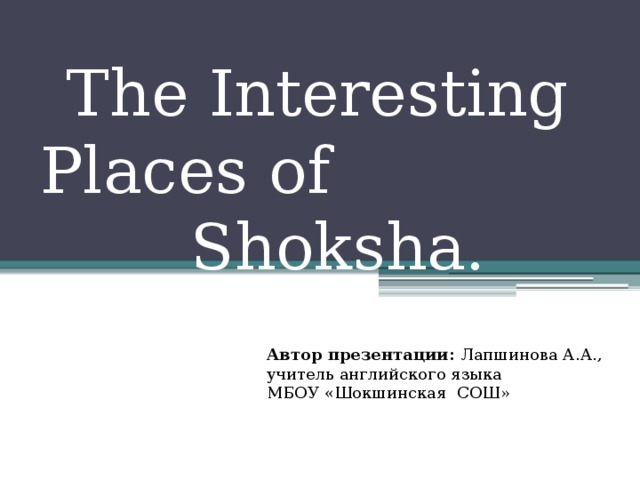
The Interesting Places of Shoksha.
Автор презентации: Лапшинова А.А.,
учитель английского языка
МБОУ «Шокшинская СОШ»
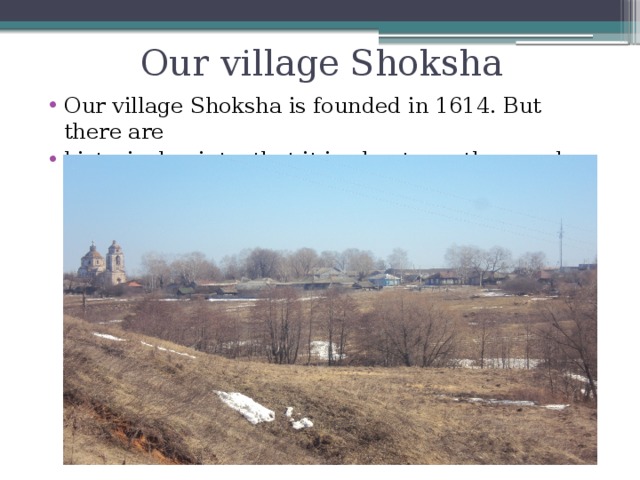
Our village Shoksha
- Our village Shoksha is founded in 1614. But there are
- historical points, that it is about one thousand years old.
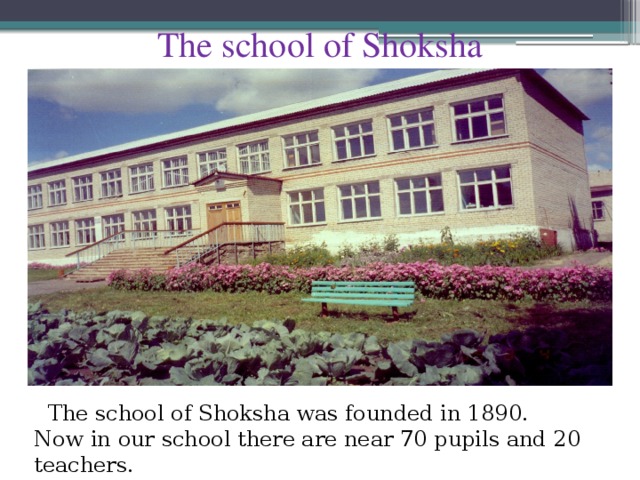
The school of Shoksha
The school of Shoksha was founded in 1890.
Now in our school there are near 70 pupils and 20 teachers.
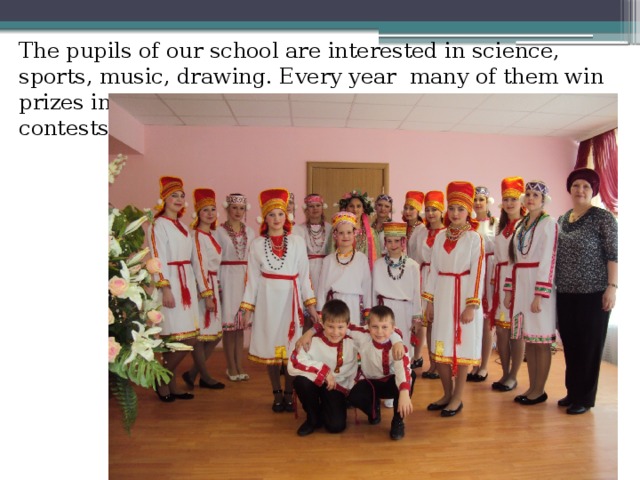
The pupils of our school are interested in science, sports, music, drawing. Every year many of them win prizes in different
contests.
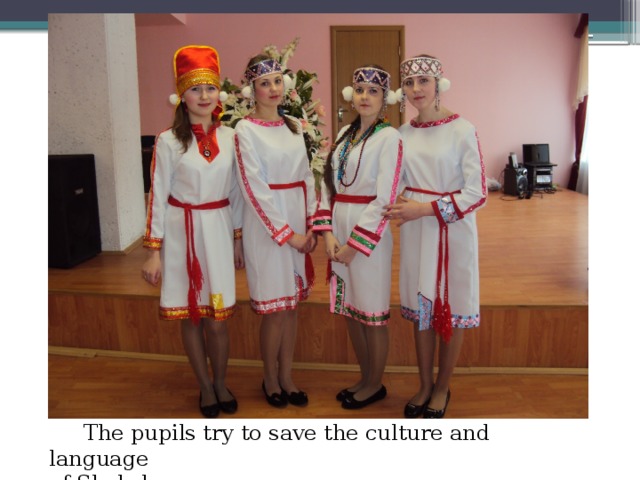
The pupils try to save the culture and language
of Shoksha.

The School Museum.
- The museum was opened on May 9, 1979. At first it was a museum of labour and war glory. The head of a museum was the veteran of the Great Patriotic War Nacharov Peter Filimonovich. In 2000 the museum was restored and got the status of the "historical museum". Now there are many different exhibitions, where you can see the history of village Shoksha and its main events.
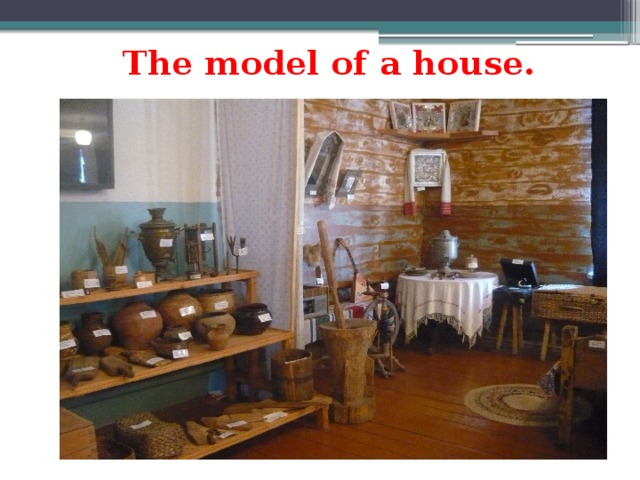
The model of a house.
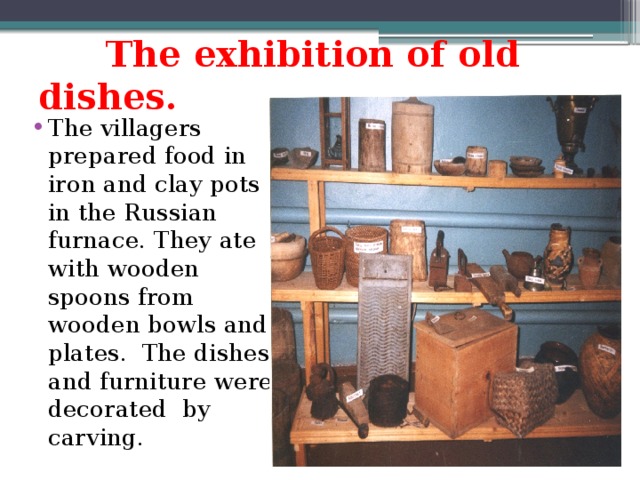
The exhibition of old dishes.
- The villagers prepared food in iron and clay pots in the Russian furnace. They ate with wooden spoons from wooden bowls and plates. The dishes and furniture were decorated by carving.
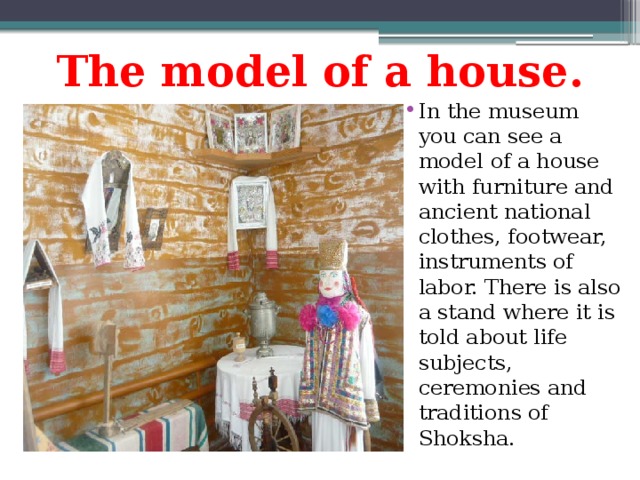
The model of a house.
- In the museum you can see a model of a house with furniture and ancient national clothes, footwear, instruments of labor. There is also a stand where it is told about life subjects, ceremonies and traditions of Shoksha.

The villagers made their clothes themselves using handmade spinning machine.
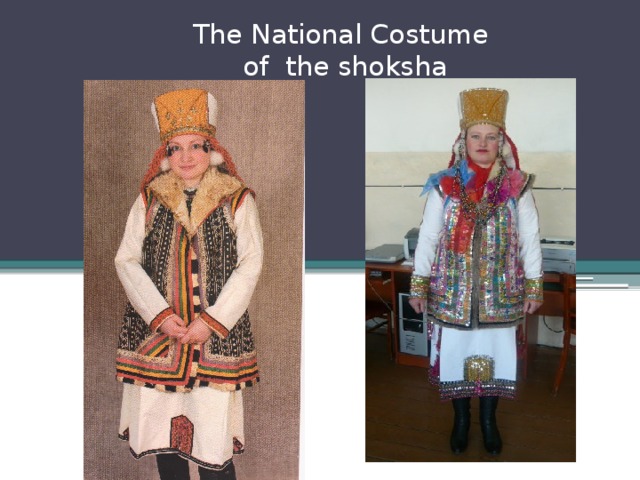
The National Costume of the shoksha
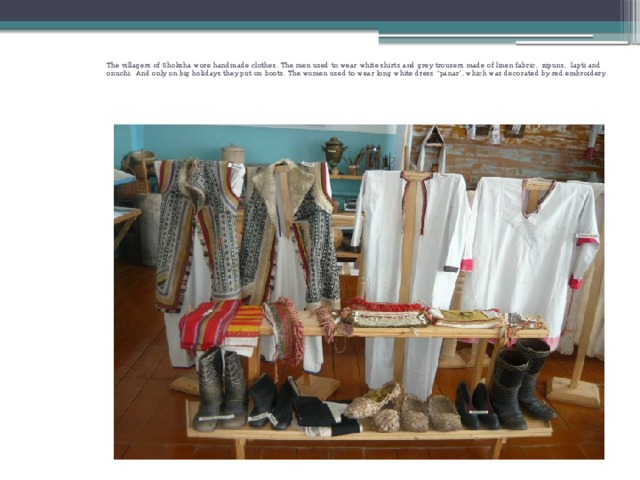
The villagers of Shoksha wore handmade clothes. The men used to wear white shirts and grey trousers made of linen fabric, zipuns, lapti and onuchi. And only on big holidays they put on boots. The women used to wear long white dress “panar’, which was decorated by red embroidery
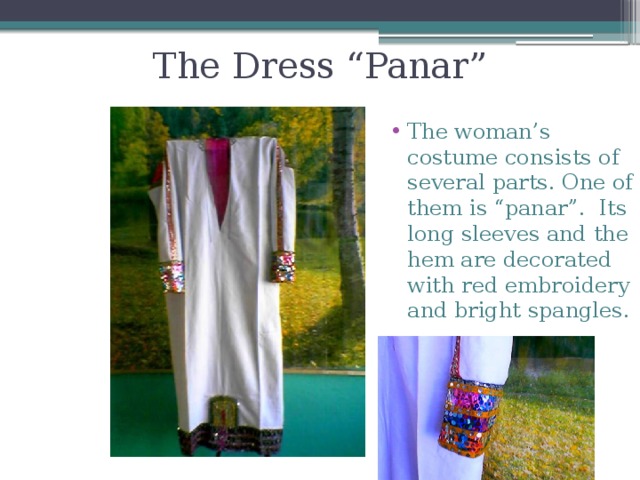
The Dress “Panar”
- The woman’s costume consists of several parts. One of them is “panar”. Its long sleeves and the hem are decorated with red embroidery and bright spangles.
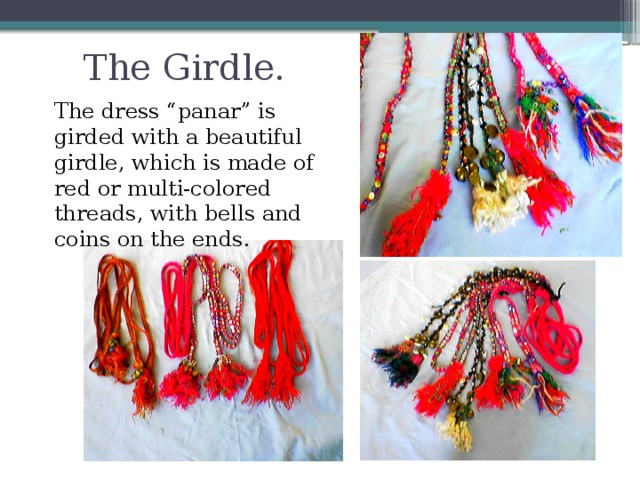
The Girdle.
The dress “panar” is girded with a beautiful girdle, which is made of red or multi-colored threads, with bells and coins on the ends.
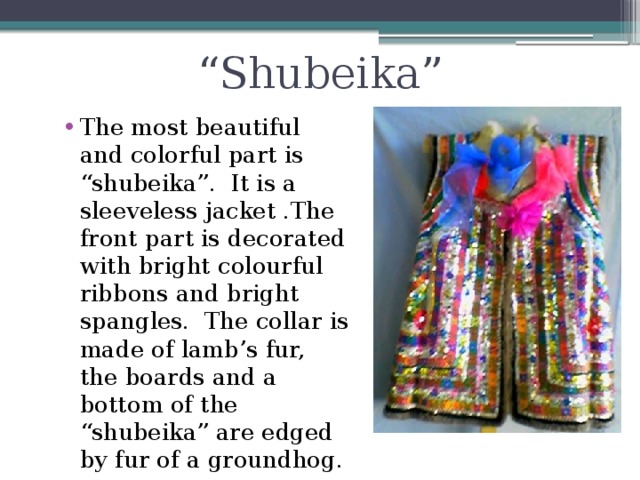
“ Shubeika”
- The most beautiful and colorful part is “shubeika”. It is a sleeveless jacket .The front part is decorated with bright colourful ribbons and bright spangles. The collar is made of lamb’s fur, the boards and a bottom of the “shubeika” are edged by fur of a groundhog.

The back part of the shubeika is decorated by red silk and also with bright colourful ribbons and bright spangles. Sometimes there are added some laces.
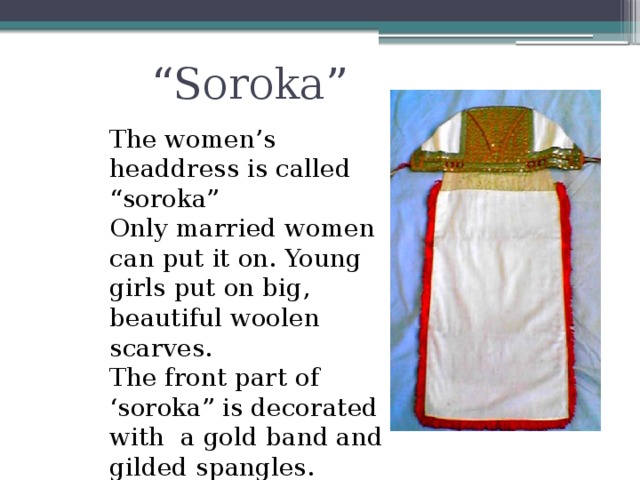
“ Soroka”
The women’s headdress is called “soroka”
Only married women can put it on. Young girls put on big, beautiful woolen scarves.
The front part of ‘soroka” is decorated with a gold band and gilded spangles.
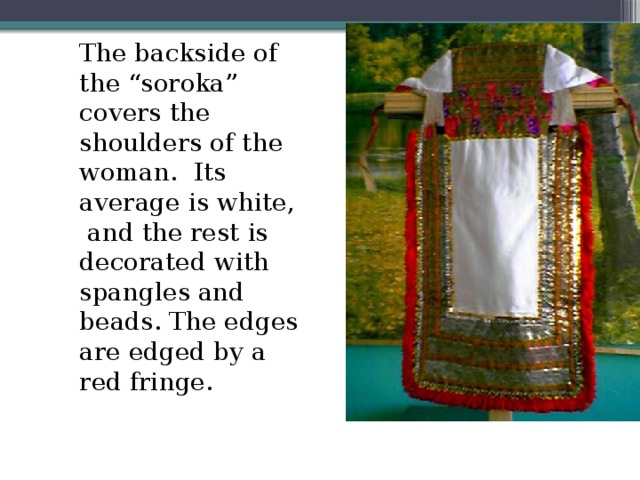
The backside of the “soroka” covers the shoulders of the woman. Its average is white, and the rest is decorated with spangles and beads. The edges are edged by a red fringe.
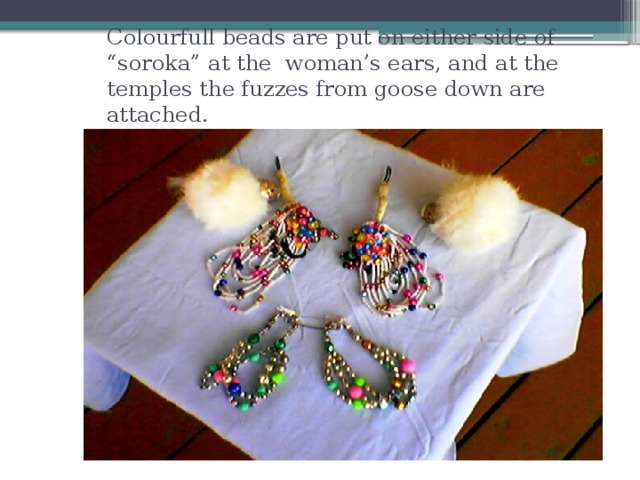
Colourfull beads are put on either side of “soroka” at the woman’s ears, and at the temples the fuzzes from goose down are attached.

On the neck there are many colourful glass beads.
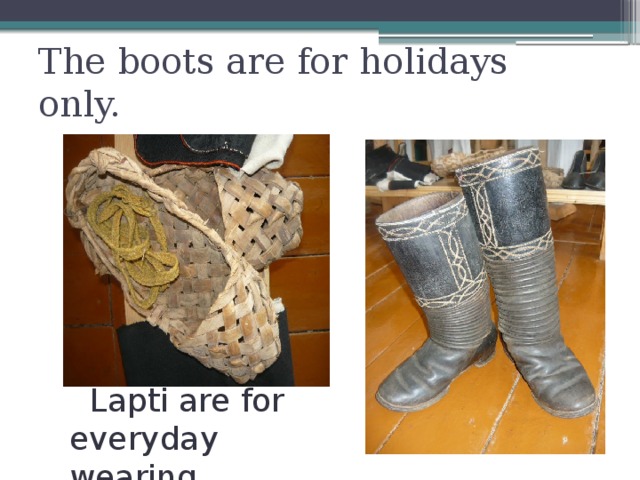
The boots are for holidays only.
Lapti are for
everyday wearing .
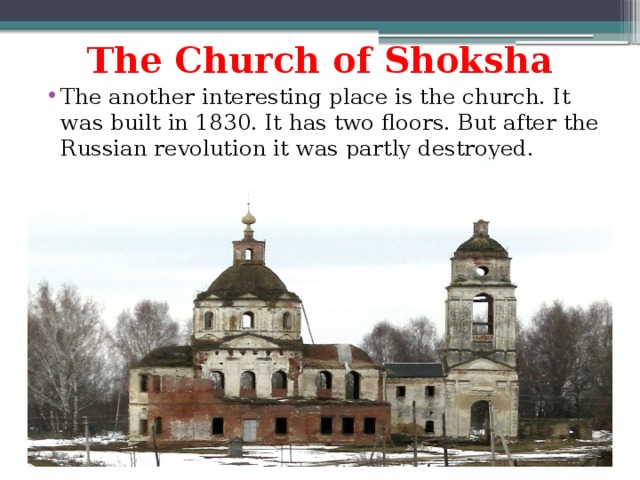
The Church of Shoksha
- The another interesting place is the church. It was built in 1830. It has two floors. But after the Russian revolution it was partly destroyed.
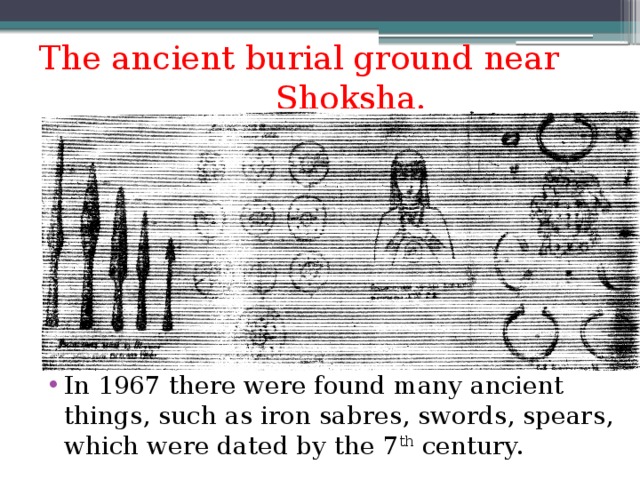
The ancient burial ground near Shoksha.
- In 1967 there were found many ancient things, such as iron sabres, swords, spears, which were dated by the 7 th century.
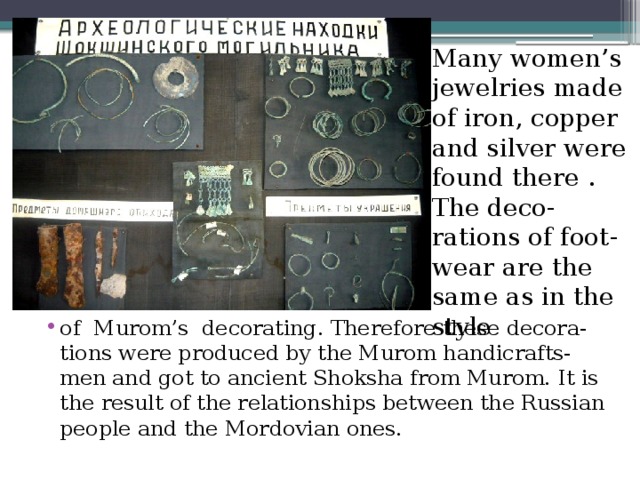
Many women’s jewelries made of iron, copper and silver were found there . The deco- rations of foot-wear are the same as in the style
- of Murom’s decorating. Therefore these decora-tions were produced by the Murom handicrafts-men and got to ancient Shoksha from Murom. It is the result of the relationships between the Russian people and the Mordovian ones.







































